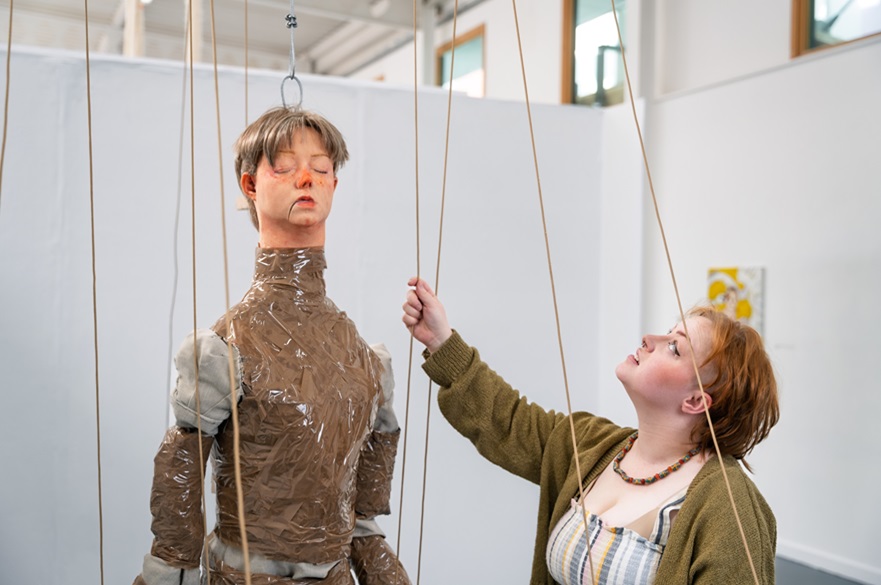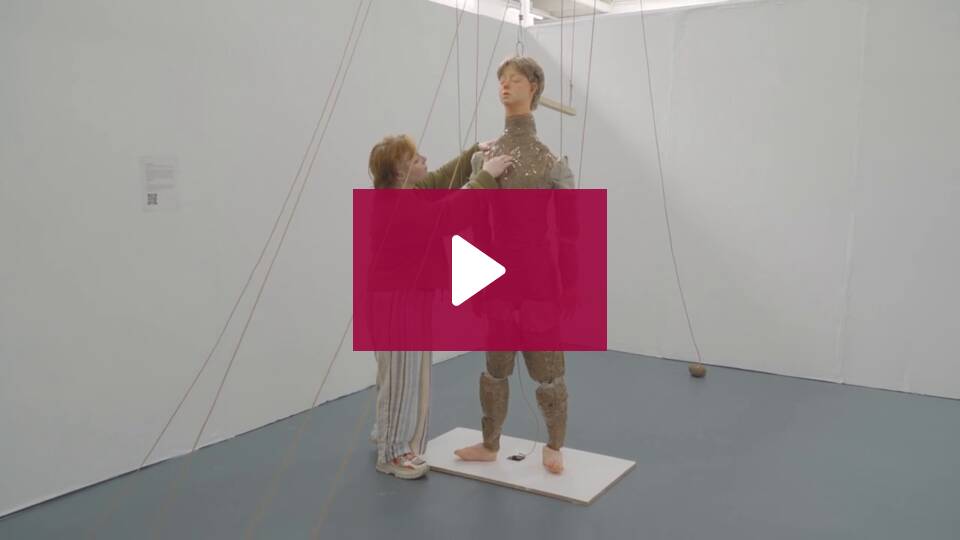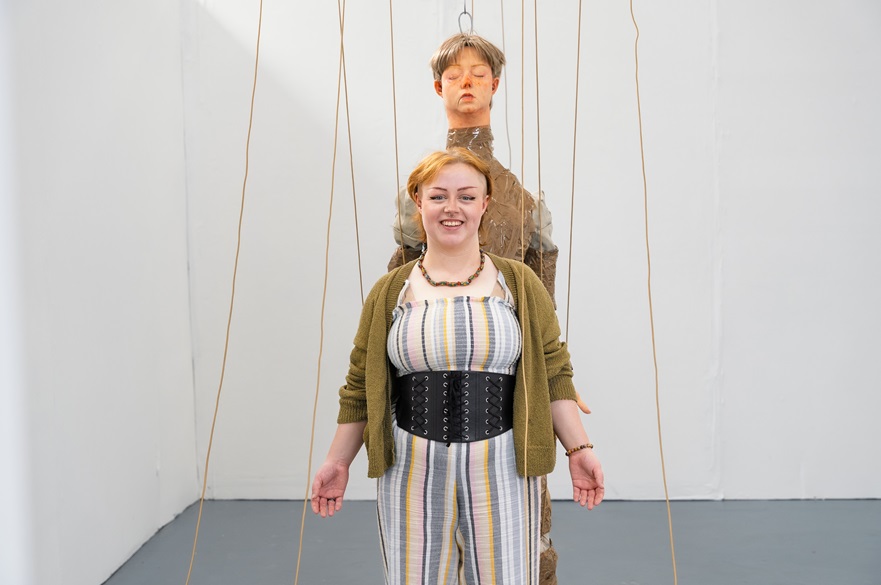
Student creates life-size puppet of herself show what it’s like to have Tourette’s
Art student Cerys Sleith created a life-size puppet of herself to show people what it’s like to have Tourette’s syndrome.
The 22-year-old, who is studying BA Fine Art at Nottingham Trent University (NTU), wanted people to understand that tics feel like ‘someone else is in control’.
Cerys, who first developed the condition aged 17, hopes to challenge misconceptions about Tourette’s syndrome and make people realise that it’s not just about involuntary swearing.
“In many ways, having Tourette’s can make you feel you’re a puppet. It feels as though someone else is controlling you, and other people can unfortunately laugh,” said Cerys, from Llannerch-y-Medd in Anglesey, Wales.
“Puppets are used for comedy and I wanted to create something interactive and give other people control of me, as a way to communicate how this condition works.
“The involuntary movements make it feel like someone else is pulling at you, and this puppet will hopefully allow others to develop a better appreciation of that loss of control.
“By inviting people interact with this puppet, I hope they may realise that people with Tourette’s can’t control it.”
Cerys’s work is on public display for the 2025 NTU Graduate Showcase, which is one of the largest displays of graduating art and design talent in the UK.

Visitors will be able to interact with the puppet through a rope and pulley system which moves the arms, while an elastic rope system allows the mouth to move.
Small musical instruments which make a sound with movement are embedded inside the arms, legs and jaw to add a comic element.
“When I first developed Tourette’s it was sudden and quite severe,” said Cerys, who studies in the Nottingham School of Art & Design.
“I couldn’t stop moving, I couldn’t eat and was a danger to myself. No one knows what caused it and it’s quite uncommon to develop it in your late teens.
“I was just watching television with a friend and my arm started to twitch. A few days later my mum took me to the doctors and then she said it could be epilepsy, Tourette’s or a brain tumour.
“You have to be continuously ticking vocally for a year until they decide you have it, but only a minority of people experience involuntary swearing.
“My vocal tics were mainly a clicking of the tongue, whistling and saying short bizarre sentences, but because my Tourette’s has calmed down now it’s hardly noticeable. It’s mainly facial tics that I get.
“Many people don’t realise though that people with Tourette’s syndrome may also have obsessive compulsive disorder (OCD), attention deficit hyperactivity disorder (ADHD) or learning difficulties, so I wanted to raise awareness of that too.”

Cerys’s puppet has been crafted from an array of materials. The head is made from silicone and is a cast of Cerys’s own head, so that its face looks just like hers.
The puppet has latex hands and feet and the body – also a cast of Cerys – is stuffed with recycled newspapers, tape, scrap paper and scrap fabric.
The joints are made from offcut fabrics to provide mobility, with wooden blocks and zinc hooks serving as bones and joints to allow for fluid movements.
The puppet contains clackers embedded in the mouth and groan tubes are in the arms.
A video projection displays Cerys’s own eyes onto the puppet’s face to convey the emotions and exhaustion that often accompany the condition.
Fine Art senior lecturer Lisa Selby, of the Nottingham School of Art & Design, said: “Cerys is making a public statement through her art to challenge misconceptions and attitudes towards Tourette’s.
“By interacting with the work, gallery visitors can gain an insight into how people with the condition may feel, which will hopefully allow them to develop a better awareness.”
